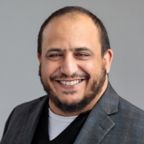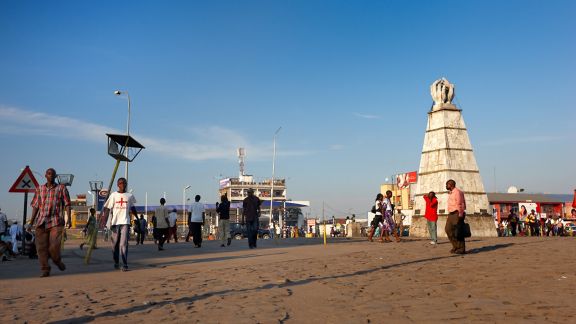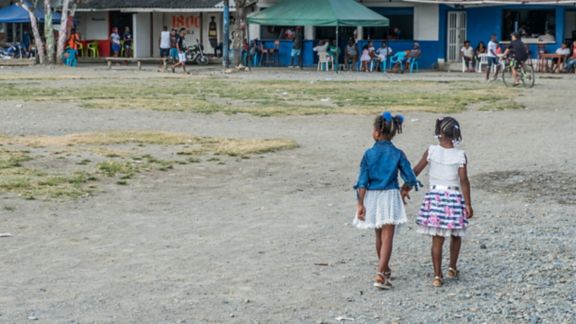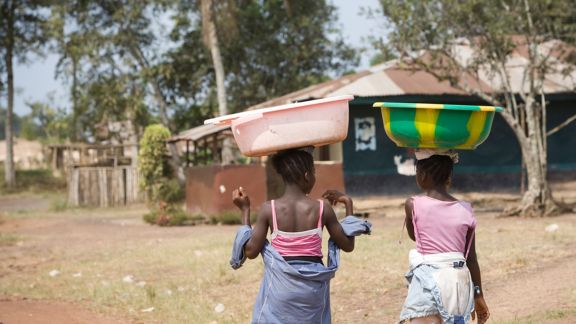Beyond the Margins: Vulnerable Populations Require Extra Care in Development Research
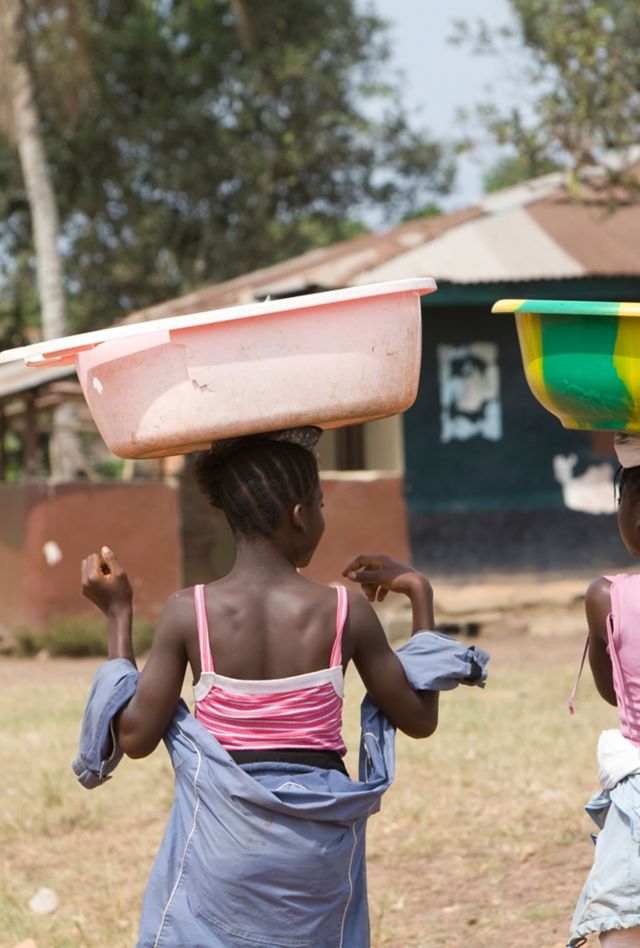
Author
Program Area Director
August 2025
Researchers must make difficult decisions when participant safety conflicts with research goals. Protecting lives must always come first.
We researchers sometimes lose sight of the obvious in our pursuit of objectivity and scientific rigor. To elicit the most authentic responses, we need to show care and compassion. This is especially true when we’re interviewing child soldiers, survivors of sexual exploitation, at-risk migrants, and other vulnerable or hard-to-reach populations. Interviewees from these groups have experienced real and, in some cases, unimaginable trauma that we need to take into consideration at every juncture.
Considering trauma and showing compassion were not the norm when I first began conducting international development research 20+ years ago. Neither was focusing on marginalized communities. Historically, international development researchers tended to study majority populations because they were the easiest to reach, and people were not yet thinking in nuanced ways about the effects of hunger, poverty, and war on marginalized groups.
Over the years, decision-makers have realized that the most marginalized groups are also at greatest risk and likely in greatest need of aid. This change in perspective motivated my colleagues and me to create the Vulnerable and Hard-to-Reach Populations Research Program Area within NORC’s International Programs department.
We have refined our ability to identify and conduct research among marginalized and hard-to-reach groups, consider how they’re differently affected by policies and events, tailor our research methods to their specific contexts, and help policymakers develop programming to address their unique needs. We’ve designed locally sensitive surveys and analytics for many research projects on marginalized populations for the U.S. Departments of Labor and State, the International Labor Organization (ILO), the Global Fund to End Modern Slavery, and others. Our research helps shape better programming for those populations and the intractable challenges they face.
NORC employs trauma-informed techniques and network sampling to survey the marginalized.
Rather than using a standard area-based probability sample to identify those who are marginalized, we’ve turned to network sampling for survivors of human trafficking or sexual exploitation, members of the LGBTQ+ community, and other groups. Members of these groups are closely linked—or networked—and can thereby identify each other and each other’s location. We can build a representative frame of small and hard-to-reach populations by sampling these networks over multiple waves. When there is no network or if the network is weak, we work with non-governmental organizations (NGOs) to understand the best way to sample and reach specific populations.
While our sampling methods vary, they all employ cutting-edge trauma-informed techniques to survey the most vulnerable. Adhering to a do-no-harm philosophy, we require that all team members, including our local enumerators, complete a training on trauma-informed interviewing techniques, including how to identify an interviewee who exhibits trauma during an interview. The training also addresses vicarious trauma that can lead to researcher burnout, especially when interviewing children. Taken together, our methods and training help ensure the most robust and ethically collected data relative to earlier methods.
Context is critical when surveying child soldiers.
NORC recently applied both network sampling and trauma-informed techniques to survey child soldiers (a subcategory of human trafficking) in the Democratic Republic of Congo (DRC), Colombia, and Yemen. We tailored our methods to address sensitivities surrounding child combatants and each country-specific context:
- In DRC, because there was no active fighting—and, quite possibly, the idea of child soldiers is somewhat normalized—we were able to recruit participants for multiple focus groups across DRC regions relatively easily. First, we identified NGOs that help DRC’s child soldiers reintegrate into society and obtained a possible respondents list from them. Next, we used a network-based approach where initial respondents identified other child soldiers they knew. We coupled this with a household survey in “hotspots” of child soldiering. This multimethod approach allowed researchers to interview both children and their primary caregivers to better understand how caregivers could empower children and keep them from being pulled into armed groups.
- Despite an end to the war in Colombia, it’s still dangerous to ask questions of former child combatants because of extreme sensitivities within communities and the central government around the issue of armed groups. Instead, we interviewed the mayors and other community leaders in formerly war-torn areas. Perhaps unsurprisingly, ensuring the safety of the former child combatants made others more open to speaking with us.
- Sometimes safety concerns take precedence over completing research objectives. In Yemen, we attempted to identify and interview child combatants, but an ongoing war made people skeptical and fearful of speaking to us and ultimately endangered our local enumerators as well as potential interviewees. We ended our primary data collection rather than risk lives.
Studying street children may provide fruitful insights.
Unfortunately, many members of marginalized groups, including children, end up on the street. Street children, devoid of care and structure in their lives, are more likely to fall into prostitution, join gangs or other armed groups, or otherwise fall prey to sexual or work exploitation later in life. I’ve already pushed forward the idea of studying street children in different locations and contexts, including Colombia and the Côte d’Ivoire, to determine whether their risk of being exploited or victimized could be mitigated by first understanding what the children themselves require and then applying a community-based approach focusing on child welfare.
Policy Implications
Our work often has a direct impact on the plight of vulnerable and marginalized populations. Our research fills a looming gap in knowledge and evidence on marginalized populations, their situation, and their needs. As such, our research findings are frequently used to inform policies and programs, and impact legislative changes, resulting in increased attention to marginalized populations, programming focused on their diverse needs, and a growing interest in funding additional research activities.
Suggested Citation
Kysia, K. (2025, August 4). Beyond the Margins: Vulnerable Populations Require Extra Care in Development Research. [Web blog post]. NORC at the University of Chicago. Retrieved from www.norc.org.



